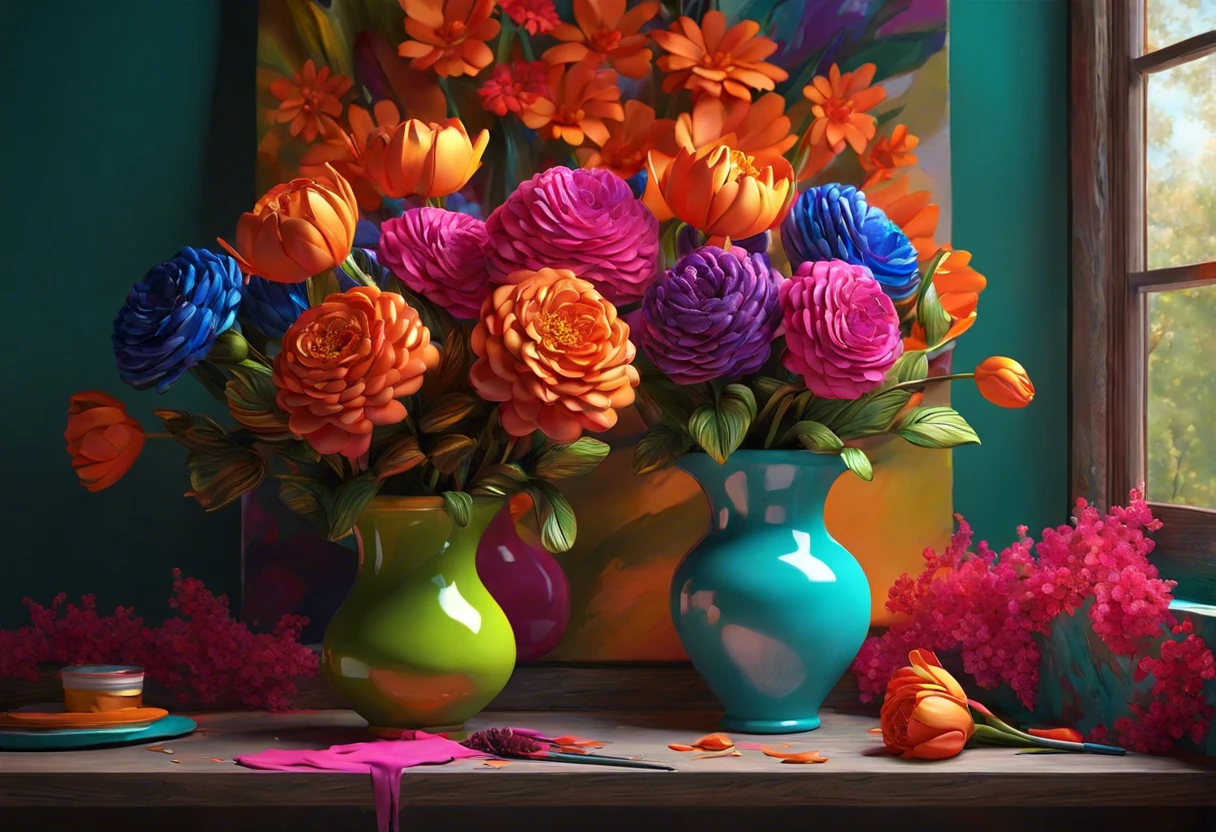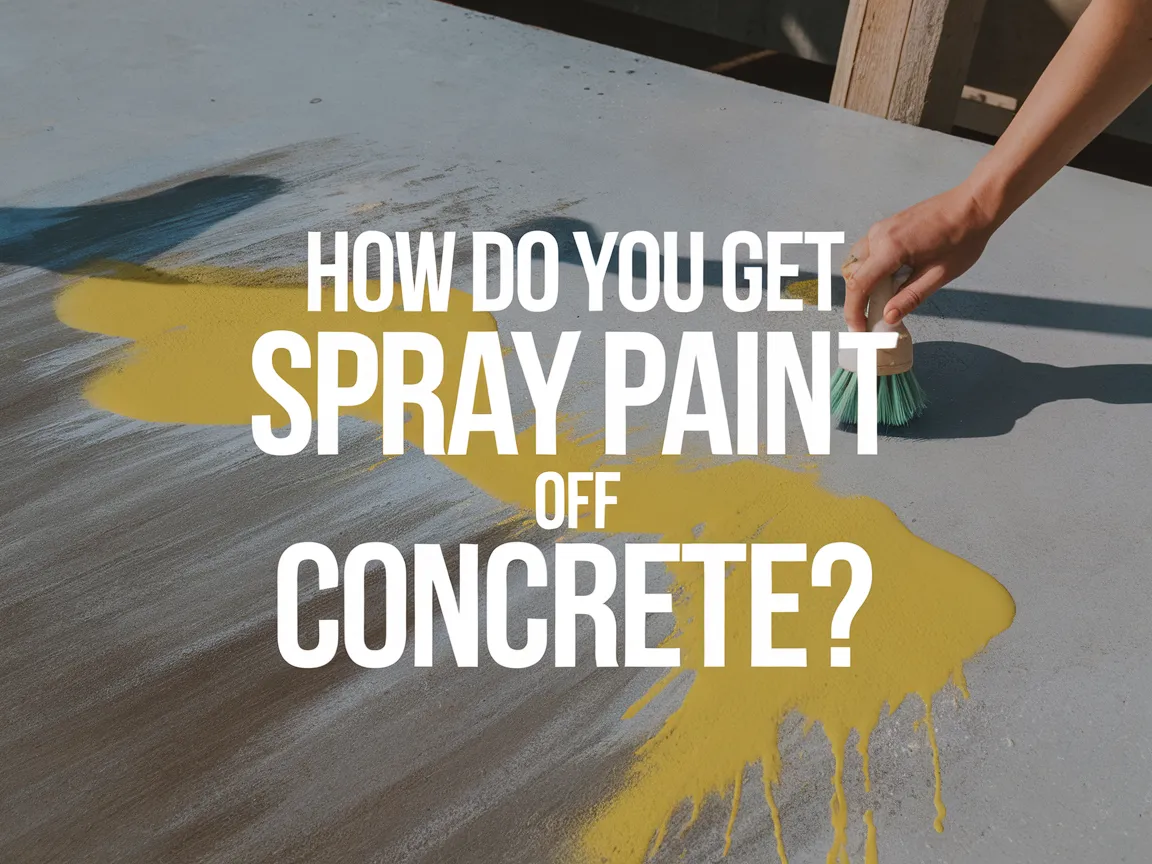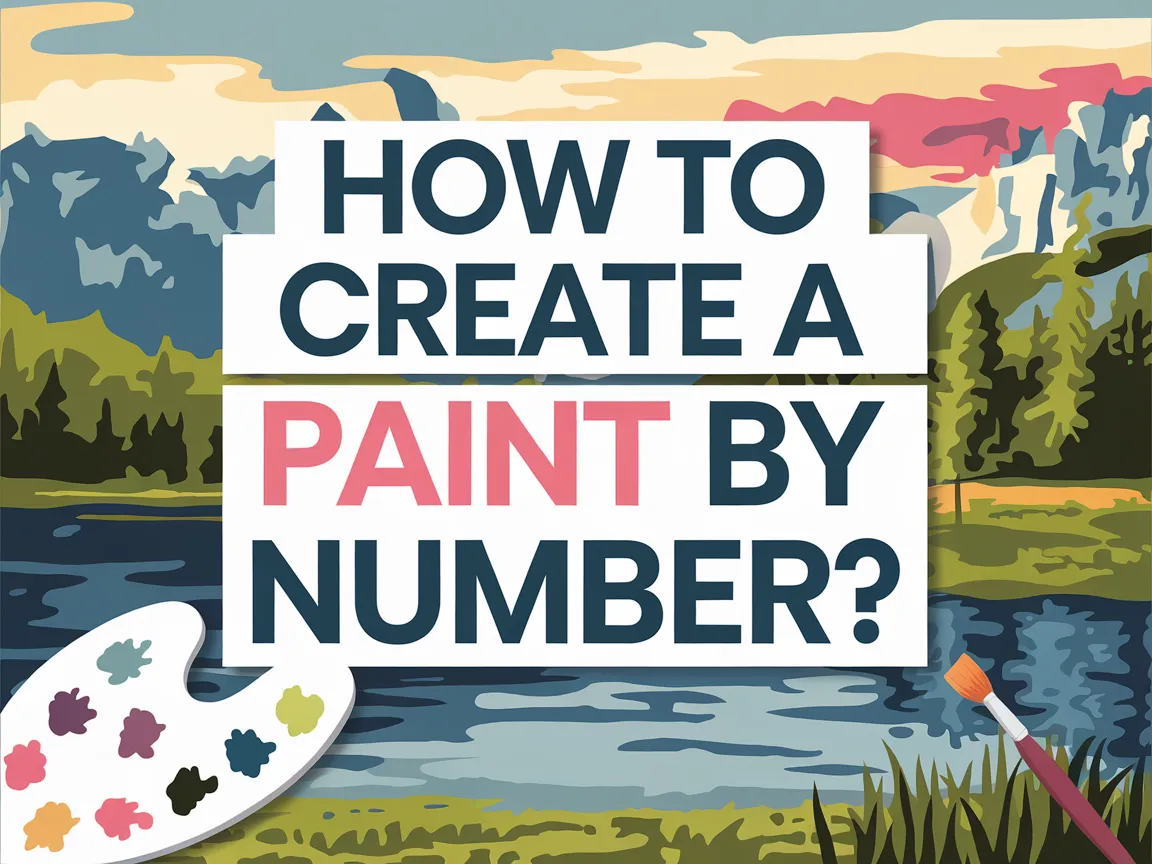Can You Paint Artificial Flowers?
Published on: June 13, 2025 | Last Updated: January 7, 2025
Written By: Sarah McClintock
Artificial flowers are pretty, fake blooms made from materials like plastic or silk. They look like real flowers, but you don’t need to water them!
So, can you paint artificial flowers? It’s important because a splash of color can breathe new life into them, and I’ve had a blast experimenting with different paints and techniques.
In this article, you’ll learn about what artificial flowers are, how to prep for painting, step-by-step painting tips, color choices, the types of flowers you can use, factors that affect painting, common problems, finishing touches, and some fun DIY project ideas. If you’re curious about can you paint fake flowers or even how to paint a flower for beginners, you’re in the right place!
Contents
- 1 Can You Paint Artificial Flowers?
- 2 What Are Artificial Flowers?
- 3 Before You Start Painting Artificial Flowers
- 4 Step-by-step Guide to Painting Artificial Flowers
- 5 Recommended Color Palette for Painting Artificial Flowers
- 6 Types Of Artificial Flowers That Can Be Painted
- 7 Factors Affecting the Painting Process Of Artificial Flowers
- 8 Common Issues When Painting Artificial Flowers
- 9 Finishing Touches for Your Painted Artificial Flowers
- 10 Creative DIY Project Ideas for Painted Artificial Flowers
- 11 Alternative Techniques for Painting Artificial Flowers
- 12 Benefits of Painting Artificial Flowers
- 13 Tips for Long-Lasting Results
- 14 Frequently Asked Questions Regarding Painting Artificial Flowers
- 15 Conclusion
- 16 Additional Resources
Can You Paint Artificial Flowers?
Yes, you can paint artificial flowers! Use acrylic paint for best results. Ensure the flowers are clean and dry before applying a few thin layers. This can enhance their color and match your decor. If you’re looking to transform more surfaces, you might want to explore painting techniques for different materials.
What Are Artificial Flowers?
Artificial flowers are decorative items made from synthetic materials that mimic real flowers. They’re crafted from polyester, plastic, silk, or paper, creating realistic appearances with heights ranging from 5 cm (2 Inches) to 60 cm (24 Inches).
You might wonder—can you paint artificial flowers? I’ve tried it and transformed some dull flowers into vibrant pieces. It was a fun experience that brought out my inner artist!
While working on home decor projects, I used this technique to spruce up my living room. Adding lustrous colors to artificial flowers was exciting and helped me refine my technique. Learning how to paint different textures, like silk or polyester, opened up a world of creativity! If you’re curious about expanding your painting painting techniques and materials can inspire new artistic possibilities.
Before You Start Painting Artificial Flowers
What do you need?
- Acrylic Paint: Use quality paint like DecoArt Americana Acrylics. It adheres well and dries quickly on artificial surfaces.
- Spray Sealant: Choose a durable sealant, such as Krylon Clear, to protect your design. It keeps the paint intact and enhances color longevity.
- Detail Brushes: Get a set of fine-tipped brushes, like the Artify 15-Piece Set. They’re essential for detailed work on intricate flower designs.
- Foam Brushes: Use dense foam brushes, like Aleene’s Easy Flow. They’re great for even application over large areas of faux petals.
- Drop Cloth: Protect your workspace with a drop cloth, such as the one from ProTapes. It minimizes mess and lets you focus on your creativity.
We’ve wrapped up considerations before painting artificial flowers here. Let us turn our attention to a step-by-step guide for painting.
Also See: Can You Paint 3D Printed Objects? Here’s How!

Step-by-step Guide to Painting Artificial Flowers
Now, we’re diving into the steps to transform your artificial flowers with paint!
-
Clean the Flowers Thoroughly
Wipe each flower gently with a damp cloth to remove dust. This ensures the paint adheres well.
Make sure to dry them completely before proceeding. Moisture can cause uneven paint application.
-
Apply a Primer (Optional)
Consider using a fabric or plastic primer designed for non-porous surfaces. This creates a better base for your paint.
I typically skip this step with silk flowers unless the original color is very dark. In such cases, a lighter primer boosts vibrancy!
-
Select Your Paint Wisely
Choose acrylic paint for most artificial flowers, as it’s flexible and water-resistant when dry. Outdoor acrylics work great for flowers exposed to moisture.
I recommend mixing in a fabric medium for better adherence on synthetic petals, giving a professional finish!
-
Use Painter’s Tape for Clean Edges
Apply painter’s tape around flower edges if you want defined lines. This prevents colors from bleeding into unwanted areas.
Press the tape down well to avoid paint seeping underneath. This gives those petals a smart look!
-
Start Painting
Dip your brush and start with gentle strokes, applying in layers. For bright colors, 2-3 coats might suffice; let each layer dry before applying the next.
Be cautious with darker shades; these often need more time to cure properly to avoid smudging later.
-
Allow the Paint to Cure Completely
After your final layer, place the flowers in a shaded area to dry completely. Drying time varies, but aim for at least 24 hours.
Don’t rush this step, as doing so can lead to crumbled or chipped paint later on. I’ve been there—patience pays off!
That covers the process of painting artificial flowers. Let’s now take a look at color suggestions for your painting.
Recommended Color Palette for Painting Artificial Flowers
For painting artificial flowers, I recommend a “Vibrant Nature” palette for its harmony and vibrancy. The main color is a vivid teal, which pairs beautifully with soft coral and brings warmth with accents of cream.
| Color Box | Hex Code | Color Name |
|---|---|---|
| #008080 | Teal | |
| #FF6F61 | Coral | |
| #FFF5E1 | Cream |
We covered the suggested color palette for painting artificial flowers. We will now cover various types of artificial flowers suitable for painting.
Types Of Artificial Flowers That Can Be Painted
Let’s explore the types of artificial flowers you can paint: silk, polyester, latex, and foam.
-
Silk Flowers
Silk flowers are made from synthetic fibers, giving them a soft, lifelike look. You can paint silk flowers with fabric paint to keep them flexible.
-
Polyester Flowers
Polyester flowers are durable and versatile. You can use acrylic paint, but seal your finishing touch to prevent peeling.
-
Latex Flowers
Latex flowers excel in realism and texture. Use paints specifically formulated for latex; regular paint may not adhere well over time.
-
Foam Flowers
Foam flowers are lightweight and flexible. You can easily paint them with craft paint; just let them dry completely to keep the colors vibrant.
Through trial and error, I’ve found that painting silk flowers yields the best results. They hold paint beautifully and look fantastic when done right!
We’ve wrapped up the various kinds of artificial flowers that can be painted. Let us turn our attention to the factors influencing the painting process.

Factors Affecting the Painting Process Of Artificial Flowers
What factors influence your ability to paint synthetic blooms effectively?
-
Material Type: The material—polyester, plastic, or silk—affects paint adhesion.
-
Paint Compatibility: Not all paints adhere to artificial flowers; use fabric or acrylic paints for best results.
-
Preparation: Cleaning the surface helps achieve an even application and vibrant colors.
-
Environment: Humidity and temperature impact drying times; work in a controlled environment.
Common Issues When Painting Artificial Flowers
My friend struggled with her artificial flower. The paint wouldn’t stick, leaving unsightly patches. She used only fabric paint, but it wasn’t a good match for the synthetic material.
To fix this, she should’ve lightly sanded the surface first. Then, using acrylic paint mixed with a fabric medium helps it adhere better, covering about 15 square centimeters (2.3 In²) evenly.
Finishing Touches for Your Painted Artificial Flowers
After transforming your artificial flowers, use a clear acrylic sealer to protect your paint job. Apply it from about 30 cm (12 Inches) away for an even coat.
Inspect each petal and leaf closely for any peeling or bubbling. Lightly sand any rough spots with 400-grit fine sandpaper for a polished look.
I recommend Aleene’s Clear Gel Tacky Glue for added adhesion between petals. You can also dab small amounts to lift edges for a dynamic effect.
Experts should consider UV protection sprays rated for up to 36 months. This prolongs the color and prevents fading, keeping your artistic blooms vibrant.
Creative DIY Project Ideas for Painted Artificial Flowers
Wanna make some glam, out-of-the-box home decor? How about creating a vibrant bouquet of painted artificial flowers or dazzling flower pots that can dazzle anyone?
For the flower bouquet, you’ll need acrylic paint, sponges, and a variety of artificial blooms. You can grab these materials for around $20 and spend approximately an hour painting.
Alternatives? You could also use fabric spray paints for a smooth finish or try out watercolor techniques on silk flowers. In my experience, using spray paint really frees you up, allowing for blending and bursts of color that truly pop! If you’re curious about expanding your painting techniques, exploring chalk paint options might offer additional creative possibilities.
Alternative Techniques for Painting Artificial Flowers
Feeling adventurous? Let’s dive into some cool alternative techniques to paint artificial flowers!
Ombre Effect
This technique creates a stunning gradient look. Start with your base color and mix in white or a lighter shade. Apply from bottom to top, gradually fading the color. It adds depth and interest!
Sponging Method
Use a sponge to dab multiple colors onto the petals. This creates a textured, soft look. Just press and twist for a beautiful, abstract effect. It’s fun and easy!
Stencil Art
Want something precise? Use stencils! Lay a stencil over your flower and spray or paint through it. You can add intricate designs without a steady hand!
Watercolor Technique
For a delicate touch, use watercolors. Mix a bit of water with your paint and apply gently. It gives a soft, pastel effect perfect for a romantic look.
Benefits of Painting Artificial Flowers
Painting artificial flowers has numerous advantages that go beyond aesthetic appeal.
- Customization: You can match your decor style effortlessly. Choose colors based on your mood or season!
- Cost-effective: Instead of buying new flowers, sprucing up old ones saves money while unleashing creativity.
- Durability: Properly painted artificial flowers can last longer, enhancing their overall longevity.
- Fun Activity: It’s a relaxing and engaging way to spend time, whether by yourself or with friends or family.
Tips for Long-Lasting Results
Let’s talk about keeping your painted flowers looking fresh.
| Tip | Details |
|---|---|
| Use Sealant | A clear acrylic sealant can protect your paint from chipping and fading for up to 12 months. |
| Store Properly | Keep your painted flowers away from direct sunlight to prevent colors from dulling. |
| Avoid Water | Don’t wash painted flowers; simply dust them off with a cloth or a soft brush. |
Frequently Asked Questions Regarding Painting Artificial Flowers
Can You Use Spray Paint on Artificial Flowers?
Yes, you can use spray paint on artificial flowers. Spray paint provides a smooth finish, matches a variety of themes, and dries quickly on non-porous surfaces like plastics commonly found in artificial arrangements. If you’re looking to transform your decor, painting surfaces requires careful technique.
How Long Does the Paint Last on Artificial Flowers?
The paint typically lasts around 3 to 6 months on artificial flowers. Factors like exposure to sunlight and humidity can affect durability, so store them away from direct light for longer wear. If you’re curious about professional painting techniques, you might want to explore the specific paint brands used by artists.
Is It Safe to Paint Artificial Flowers?
Yes, it’s safe to paint artificial flowers. Most craft paints are non-toxic and suitable for use indoors. However, ensure proper ventilation to avoid inhaling fumes during spray painting for safety. If you’re looking to expand your painting skills beyond crafts, you might want to explore painting aluminum surfaces for home improvement projects.
What Type Of Paint Works Best for Artificial Flowers?
Adhesive spray paint or acrylic paint works best for artificial flowers. These types adhere well to synthetics and provide lasting color. Look for paint meant for plastics to ensure optimal results. If you’re unsure about paint consistency, you might want to adjust paint viscosity carefully.
Can Painted Artificial Flowers Be Washed?
No, painted artificial flowers shouldn’t be washed with water. Washing them can damage the paint and cause colors to bleed. Instead, dust gently with a cloth or use a damp sponge to clean.
Can You Repaint Artificial Flowers?
Yes, you can repaint artificial flowers. Changing colors or refreshing old ones is a great way to give your decor a new look. Just make sure to remove old paint and clean the surface before applying a new coat for best results.
How Do I Prevent Rust on Painted Artificial Flowers?
Preventing rust on painted artificial flowers involves using rust-resistant paint. Choose paints labeled for outdoor use as they are specifically formulated to withstand moisture, thus minimizing the risk of rust. If you want to enhance your paint’s protective capabilities, you might consider exploring ceramic coating techniques.
Also See: Can You Paint a Lamp Shade? A Simple DIY Guide
Conclusion
That’s everything I wanted to share with you regarding painting artificial flowers.
We covered what artificial flowers are, preparation steps, a detailed painting guide, color choices, types suitable for painting, factors impacting the process, common issues, finishing touches, and creative project ideas.
With the right techniques and materials, you can definitely paint artificial flowers. For further insights or questions about painting artificial flowers or related topics, feel free to reach out to me.
For more informative articles and updates, please visit our homepage at Paint Answers.
Additional Resources
- Edwards, B. (2012). Drawing on the Right Side of the Brain. New York, NY: TarcherPerigee.
- Spray Paint Fake Flowers Any Color, In Minutes – DIY Candy
- How to Add Easy Color to Artificial or Faux Flowers – South House Designs




